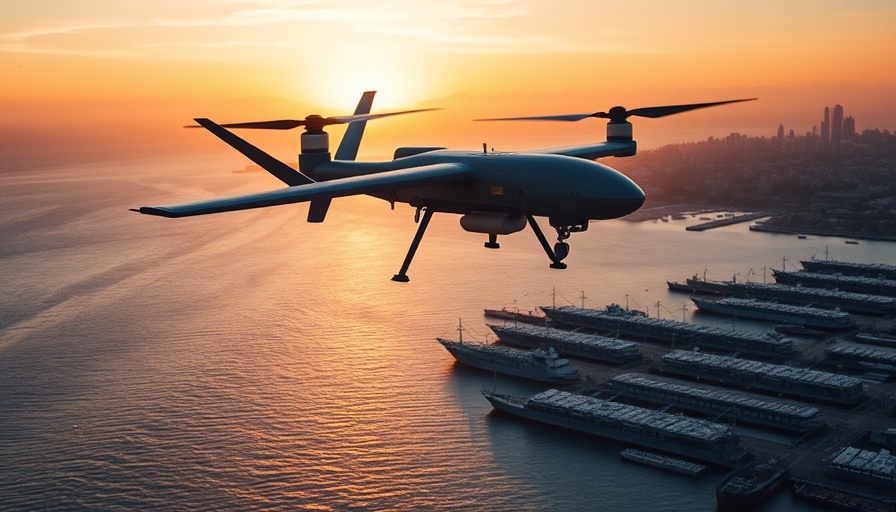
Exploring the Future of UAS: The MQ-9B SeaGuardian
The recently held Open House at Naval Air Station Whidbey Island (NASWI) showcased the advanced capabilities of the MQ-9B SeaGuardian, a cutting-edge unmanned aircraft system (UAS) developed by General Atomics Aeronautical Systems, Inc. This multi-mission drone not only represents a leap in maritime reconnaissance technology but also embodies the convergence of innovation in military aviation.
A Glimpse Into Multi-Mission Capabilities
The MQ-9B SeaGuardian is configured for Anti-Submarine Warfare, demonstrating its versatility as a Group 5 UAS. Attendees of the August 23rd Open House were treated to an up-close look at an aircraft designed to perform multiple tasks, including intelligence, surveillance, and reconnaissance. Representatives from GA-ASI highlighted that the SeaGuardian can operate remotely, with crews controlling the aircraft via satellite link, bringing a level of operational flexibility that is challenging to match.
Significant Achievements and Future Tests
This event underlined NASWI's evolving role as a base for UAS operations, a facility actively involved in significant Navy exercises. Although the MQ-9B has yet to land at Whidbey Island, it marked its territory by being managed remotely from this hub during operations carried out in various U.S. airspace regions including Hawaiian and Southern California airspace. Anticipation is especially high for 2026, when the SeaGuardian will play a pivotal role in an operational evaluation within the Indo-Pacific Command area.
Advanced Technology: A Closer Look at the MQ-9B Features
Equipped with advanced onboard radar systems, the MQ-9B stands out with its Detect and Avoid System that allows it to navigate national airspace effectively, similar to piloted aircraft. This capability is crucial, especially given the increasing demand for sophisticated air support without the dependency on manned platforms. The drone showcased during the Open House also demonstrated its autonomous take-off and landing features, elements that are becoming vital in military operations.
Industry Implications and Customer Interest
Given the growing demand for efficient maritime capabilities, the MQ-9B SeaGuardian is expected to attract considerable interest from militaries around the world. GA-ASI claims the SeaGuardian delivers high-end results at significantly lower costs compared to traditional aviation units. This could shape future military budgets and equip strategies as nations look to balance their operational effectiveness with fiscal responsibility.
The Insights of GA-ASI Leadership
David R. Alexander, President of GA-ASI, emphasized the importance of ongoing public engagement through demonstrations such as the one at NAS Whidbey. Collaboration between GA-ASI and the Navy is critical in developing the SeaGuardian's capabilities, particularly in meeting emerging defense needs. Events like the Open House not only improve transparency but also foster community relations, highlighting technological advancements directly to stakeholders.
Looking Ahead: The Naval Perspective
The future of unmanned systems appears bright, especially with entities like the Naval Air Warfare Center Aircraft Division (NAWCAD) AIRWorks spearheading developments and integration. As UAS operations become a standard across defense institutions, the lessons learned and capabilities showcased through platforms like the MQ-9B SeaGuardian will undoubtedly influence military strategy for years to come.
Engagement with the public and military showcases like the recent Open House at NAS Whidbey Island signifies an eagerness in the industry to not only advance operational capabilities but also cultivate a knowledgeable society regarding the evolving landscape of aerial defense technologies.
 Add Row
Add Row  Add
Add 




Write A Comment